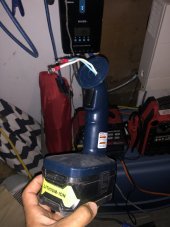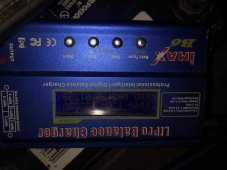1. 100 watt monocrystaline panel
2. Renogy Rover Mppt 40 amp (you could get by with 20amp I’m sure)
3. iMax B6
4. 2x 6v Trojan t-105 flooded lead acid (you could probably use any other 12v battery)
5. Old ryobi flashlight w/o the bulb (or any other old tool out of the trash or on OfferUp)
6. The boost converter that Andy from off grid garage used to charge his big battery from a “mystery” 12v battery would charge your 40v battery.
2. Renogy Rover Mppt 40 amp (you could get by with 20amp I’m sure)
3. iMax B6
4. 2x 6v Trojan t-105 flooded lead acid (you could probably use any other 12v battery)
5. Old ryobi flashlight w/o the bulb (or any other old tool out of the trash or on OfferUp)
6. The boost converter that Andy from off grid garage used to charge his big battery from a “mystery” 12v battery would charge your 40v battery.






